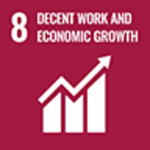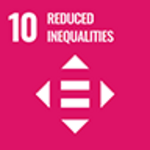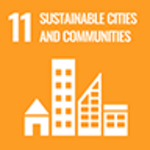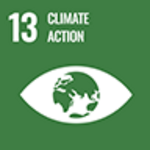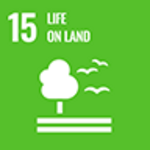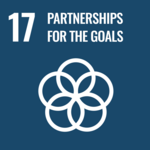
Postdoctoral FellowTakashi Fukuyama
Affiliation: Center for Advanced Tourism Studies
Specialty: Tourism
Research keywords: Arctic region, Sami tourism, adventure tourism, reindeer herding, snow and ice and humans
Alma mater: Sendai Mukoyama High School (Miyagi Prefecture)
Final academic background: Hokkaido University Graduate School of International Public Relations, Media and Tourism
HP address:https://www.cats.hokudai.ac.jp/
What kind of research are you doing?
I am researching the efforts of Sami ethnic tourism in the Arctic region from the perspective of regional sustainability and resilience. In the part of Inari in northern Finland, which is our research field, they are reindeer herders as their occupation, and they invite tourists from all over the world, albeit on a small scale, to their daily lives where the Sami culture is alive, and attract them. doing. For example, taking tourists on snow and ice deep into the forest, surrounded by hundreds of free-ranging reindeer, around a bonfire with a limited number of eight participants, where they learn about authentic Sami culture. He speaks passionately and answers questions sincerely. This is truly a true tourist experience. Unfortunately, in recent years, in Northern Europe, so-called fake Sami tourism, such as dog sledding with huskies, which was originally unrelated, is rampant, especially among group tours. Therefore, in the field of tourism, the authenticity of indigenous culture and its tourism is now being questioned.
On the other hand, one of the global trends in the tourism sector is adventure tourism (AT). Apart from the misunderstandings that the term tends to invite, the characteristics of AT include small numbers of people, long stays, respect for the local nature and culture, high consumption, and above all, a desire for authenticity. The world is now paying attention to AT as a form of sustainable tourism. In general, AT is mainly for overseas customers, and the market is said to be about 1 trillion yen, and this market is demanding authentic experiences from all over the world. Our research and analysis are based on the hypothesis that this AT framework can be adapted to the authenticity of Sami ethnic tourism. However, due to the influence of Covid-19, the Inari region has also stopped receiving tourists from overseas for about two years. Therefore, from the perspective of regional resilience, we set out to verify the potential of the AT market in Finland for Sami ethnic tourism. In fact, based on the interview surveys conducted so far, many of the people involved acknowledged the significance and potential of the project, but also recognized that it was a rather severe challenge. However, we will continue to conduct multifaceted research and analysis with the belief that verification of this possibility will contribute to resilient regional adaptation measures in the event of an emergency in the tourism sector, which is considered vulnerable. .

Actual reindeer grazing scene by Sami, one of the project collaborators
What kind of research results can we expect?
First, academically, based on the framework of AT, we will be able to provide a detailed tourism-oriented explanation of the positioning of authentic experience in Sami ethnic tourism through a case study of the Inari region. The essential point is, for example, the cultural fusion of the past traditions and the current evolutionary form with an eye on the future. We are also looking to apply the concept of value co-creation through interaction between hosts and guests. For this reason, we have established a diverse group of Sami people, including the Sami Parliament (parliament), Siida (museum), Sayos (cultural facilities), ARCTISEN (Culturally Sensitive Tourism in the Arctic), and the Sami Education Institute (vocational training school). We have already built a network of relevant local stakeholders and are conducting surveys. In addition, joint research with multiple researchers, including the Arctic Center of the University of Lapland and the Faculty of Social Sciences, is currently in the embryonic stage. This research has just started in April 2022 after being selected for the ArCSI (Arctic Research Acceleration Project), but it is expected that research based on such a network will be deepened.
Next, from the perspective of social implementation, we are planning to hold a FAM trip in February 2024. This is a 2-night, 3-day monitor tour consisting of a cultural experience menu of authentic Sami tourism. We started this project in cooperation with several tourism organizations in Finland and related parties in the Inari region. We will receive feedback from the professional perspective of tourism sites, thoroughly analyze and consider them, and return the research results to the Inari area.

Talks about cooperation with the development manager of Sami Education Institute
What inspired you to start this research?
To tell the truth, my original research field is not directly related to indigenous tourism in the Arctic, but the process of creating "snow and ice tourism" that can contribute to the development of tourism resources. Since 2013, I have been conducting comparative research based on (tourism) resource theory, particularly on drift ice tourism in Monbetsu, Hokkaido, and ice hotel development processes in Kiruna, Sweden. In research activities related to the cold, there is a connection with Arctic Research Center and Faculty of Engineering within the university, and we have completed a three-year joint project to identify issues related to Arctic tourism. The project to be introduced has been adopted. Based on the background and the current situation, I think that research in cold regions surrounded by snow and ice is related to each other because of the common point of the relationship between snow and ice and humans. On top of that, I am realizing the high significance of comparative research between Northern Europe and Hokkaido, which has a high affinity. This project mainly focuses on research on the tourism efforts of the Sami people in the Inari region, located in the Arctic region, but we are also considering comparative analysis with the tourism of the Ainu people in the Akan region of Hokkaido.

Inside the Ice Hotel room where the author stayed

Garinko III "IMERU" in Monbetsu City
What are your plans for the future?
If I were to interpret the outline of this project explained above from the perspective of the SDGs, it would be as follows.
- SDG 8: Tourism income associated with reindeer livelihoods that pride themselves on authentic Sami culture
- SDG10: Correcting socioeconomic disparities for all people, including indigenous peoples
- SDG11: Cultivating local resilience against environmental changes such as global warming and Covid-19
- SDG13: Education and awareness-raising activities related to climate change mitigation, adaptation, and impact mitigation using tourism functions
- SDG15: Promote sustainable land use and management for reindeer herding and tourism
- SDG17: International joint research to promote best practices related to the above comprehensive SDGs
For example, in relation to 11 and 13, Sámi reindeer herding and tourism efforts are indeed being negatively impacted by climate change due to the apparent increased and decreased melting of snow and ice in winter. Therefore, such tourism activities are also thought to encourage tourists who enjoy sightseeing to raise their awareness of the mitigation of global warming. This is one of the important features of tourism. I see this feature as a more positive and effective approach than, say, ringing alarm bells.
Seen in this way, the extension of this project includes the possibility of research that faces the SDGs from a broader perspective. It is the possibility that everyone can think about a sustainable global environment together through snow and ice and people, or snow and ice and tourism. Increasing the value of snow and ice itself through tourism activities and tourism research that are directly related to snow and ice will foster an awareness among as many people as possible in the future to protect snow and ice that are melting due to global warming. It can be expected that this will lead to an attitude of thinking about the SDGs on a global scale. While envisioning such a grand vision, I intend to earnestly study the lifestyles and culture of the Sami people living in the Arctic from the perspective of tourism.
◉Introduction of this project by Public Relations Division, Social Co-Creation Department, Hokkaido University

















